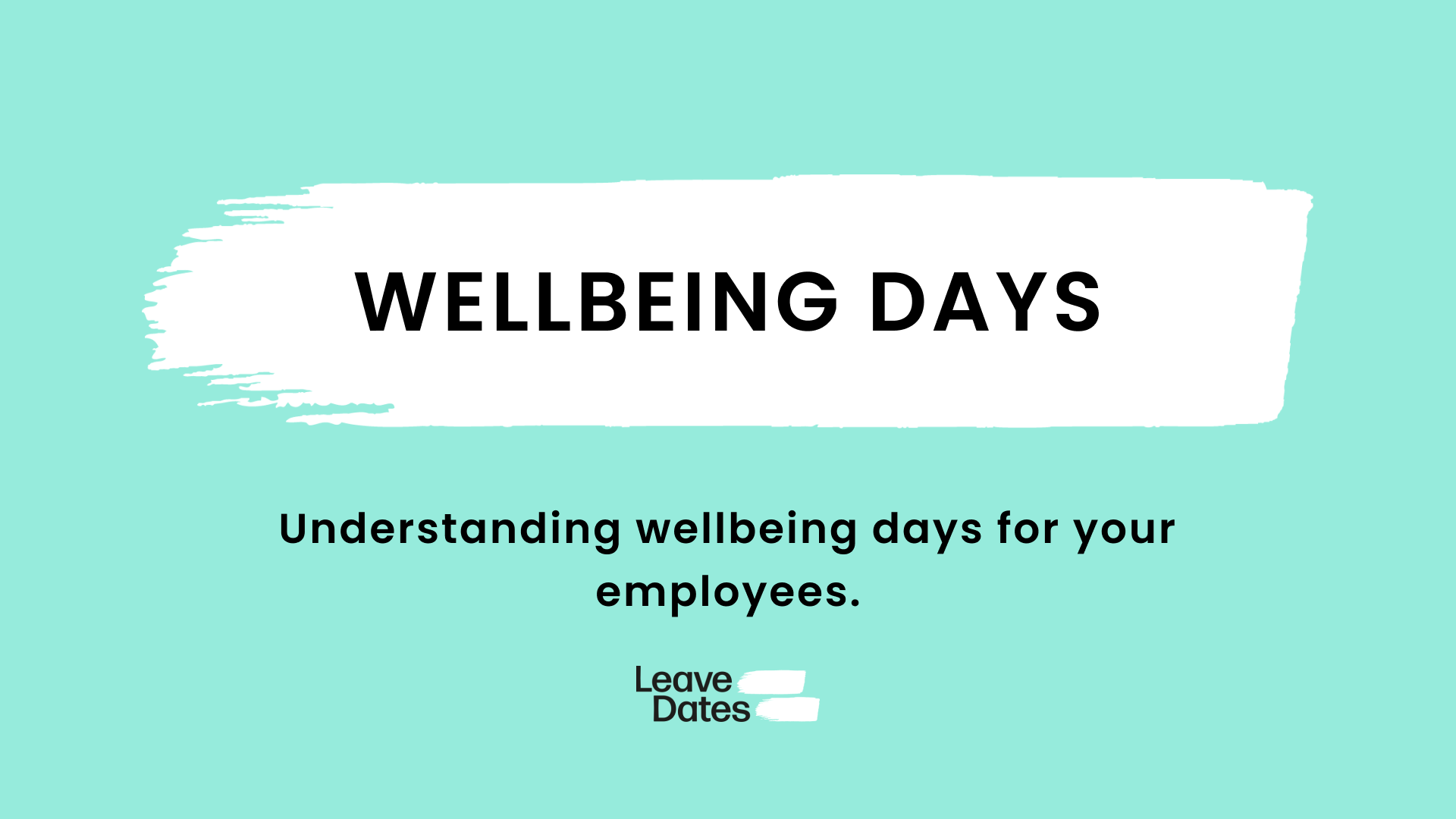
For a long time, feeling overwhelmed with stress seemed to be an everyday — and even celebrated — occurrence in the workplace. However, more and more people are aware that work-related stress has become an epidemic negatively impacting companies and their employees across the UK.
Findings from the CIPD Health and Wellbeing at Work Report 2023 indicate that stress is still one of the critical factors in employee absences. Up to 76% of respondents cited stress as a reason they had been absent from work over the past year.
With current figures like these, how can employers help employees balance work and rest to support the company's success?
Meet the employee wellbeing day.
What are employee wellbeing days?
When employees push themselves too hard at work, they might be doing it with the notion of completing more tasks for the company's benefit. However, overworked employees are detrimental to the company, as they'll be more likely to submit either rushed or mediocre work. Wellness days are designated time off that employees can use to recharge themselves, putting them in the right headspace for their jobs.Over two-thirds of professionals in a recent survey reported that they had "quiet quit" a job where they felt overwhelmed. When staff over-exert themselves, it can cause them to feel burned out — a combination of physical, mental, and emotional exhaustion that wellbeing leave could have helped to prevent. Of course, this is why the concept of wellbeing days has been introduced — it gives employees the chance to proactively take care of their mental health.
Put simply, wellbeing days are designated time off that employees can use to recharge themselves, putting them in the right headspace for their jobs. Employers and managers must trust that their team is taking care of themselves during this period, whether it means lounging at home all day or going to the city. After all, wellbeing means different things to different people.
The role of line managers in handling wellbeing and absence issues
Most companies look to department managers to monitor, manage and ultimately, take responsibility for absences within their team. It assumes that all managers and supervisors in each department have the appropriate training and skills to manage these events. As management style is a common cause of workplace stress, the expectation that line management can adequately handle stress-related absences needs to be revised.
Staff in management roles should be given consistent training to help prevent circumstances that could lead to unnecessary stress. When managers are trained on understanding their management style and communicating with staff in addition to internal policies, this sets managers and their teams up for success in the wellbeing space.
Employee wellbeing impacts productivity
For employers still worried that offering their employees wellbeing leave is counterproductive, Forbes reports that fewer working hours have been tied to greater productivity and wellbeing. It is being meaningfully trialled worldwide as employees are focused on working smarter, not longer.
Case in point, when Lendlease, an Australian construction company, started providing a wellbeing day per quarter, employees became more engaged, productive, and loyal to their employer. Australian companies are finding such success with wellbeing initiative that even the four-day working week could soon become the norm.

Comeet's discussion on some of the best global companies to work for highlights the importance of achieving a work-life balance in developing happier and more productive employees. Employees can put their priorities into perspective when given the flexibility, time, and space to attend to their personal needs.
Brian Fajar summed it up well, saying that employees must balance empowering team members to achieve company goals and having time to themselves.
How to implement wellbeing leave in your workplace
Wellness days are an excellent way to boost both employee welfare and productivity. Still, employers must be careful when they establish this conceptCompanies should allow the correct number of wellbeing days to positively impact their employees' wellbeing without affecting productivity. It's important to note that there's no one-size-fits-all approach to offering wellbeing days.
As in the example above, a good figure would be one day per quarter. Still, managers and employees must evaluate this policy regularly to see if four wellbeing days a year is suitable.
To ensure that wellbeing days don't disrupt work, there should be clear guidelines on how they should be requested. However, try not to be too prescriptive on how they should be used, as 'health' means different things to different people.
Requesting a day off at short notice may assist your wellbeing, but it will not help the wellbeing of the rest of the team. Therefore, it's recommended that policies are implemented to ensure that wellbeing days are requested with sufficient notice to allow teams to plan their resources.
Moving forward with wellbeing leave
If caring about your employees is a core value of your organisation, then introducing wellbeing days, or what is commonly referred to as a wellness day off, will make your employees feel cared for — in a world full of pressure and stress.
However, it should only be entered into considering the possible downsides or the appropriate management training to help prevent staff burnout.
With careful planning and a clear focus on the 'care of' rather than 'performance of' employees, a policy on Wellbeing days can be a positive change for your organisation.
Your unique leave policies are easy to implement with Leave Dates.



